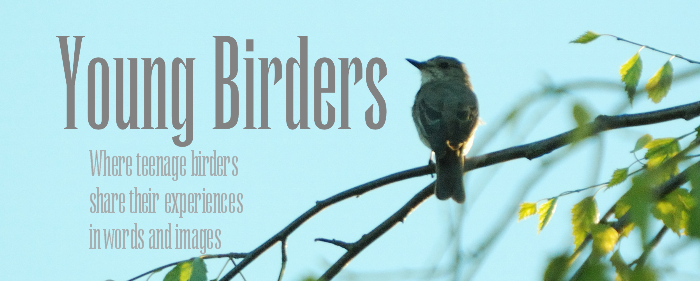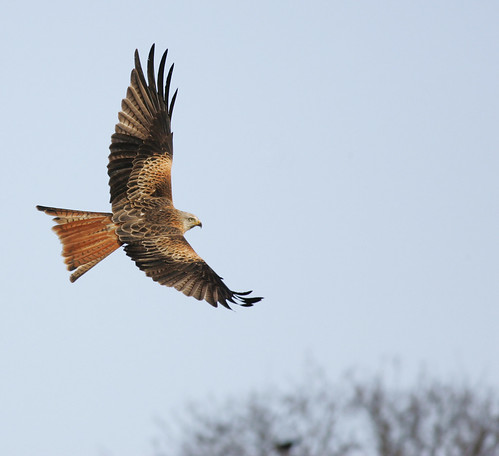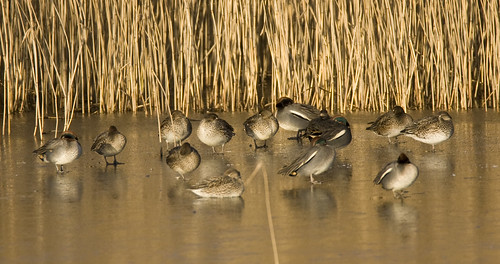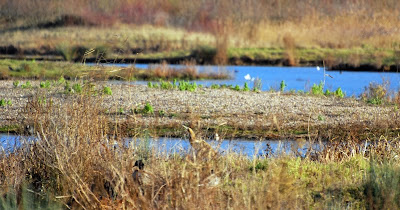
Hey guys,
Just wanted to give a quick review on 2009. It was an amazing year for me.
A Feb trip to the famous Sax-zim Bog in northern Minnesota added some insane boreal species to my year list including N Hawk-owl, both ABA Crossbills, Black-backed and 3-toed Woodpeckers and many more.
The months between Feb and May were filled with birding around Wisconsin and racking up year birds. In mid May, I left for Arizona. On the way down, a stop at a state park in far Northern Texas panhandle rewarded me with not only my lifer Golden-fronted Woodpeckers, Mississippi Kite and Black-crested Titmouse, but also with no less than 5 individuals of my long time ultimate nemesis bird. Painted Bunting. Finally!!
I spent 4 months of the summer living in Southeast Arizona, working as a local birding guide.
Summer 2009 was likely a historical year for mexican rarities. Only a couple times before have there been as many rare species in one summer as there was last summer. The highlights of the summer were crazy. Not one, but THREE first ABA area records. A Sinaloa Wren that had been found in fall '08 was present all summer and gave decent views considering how seclusive it was. The ABA's 15th vagrant and potentially first accepted record of Brown-backed Solitaire (first found by Dave Jasper and VENT's Camp Chiricahua group) spent a couple weeks bouncing back and forth between two canyons. The ultimate highlight of the summer though was the first ABA record of Gray-collared Becard. A west Mexican endemic that somehow made it's way into the famous South Fork of Cave Creek Canyon just outside of the town of Portal, AZ. After hearing the initial report, I dropped everything and ran up the canyon. 15 minutes later, I re-found the bird near the bridge, photographed it and alerted the rest of the AZ birding community. 50 birders showed up that evening. The next morning, nearly 150 people were scouring the canyon in vain. Over the course of the next few weeks, I would guess well over 500 birders looked for the bird. From what I heard, only a couple dozen ever got to see it.
The summer was also full of other rarities. The ABA's 15th record of Crescent-chested Warbler showed up about a week after I arrived. Nesting Rufous-capped Warblers (1st nesting record) added another highlight to the summer. The continuing (and now famous) Madera Canyon Flame-colored Tanager put on his usual show but was slightly dimmed by the presence of a nesting pair in the Chiricahuas.
Berylline Hummingbirds seemed almost common compared to other years. The highlight was seeing 4 of these awesome rare hummingbirds in one day.
The rare but regular White-eared Hummingbirds also put on a good show. 5 in one day made for another highlight.
Black-capped Gnatcatchers proved easy to find compared to '08 when Camp Chiricahua missed them.
Five-striped Sparrows were regular in California gulch, but at least one bird made headlines when it showed up in Florida Canyon, near Madera Canyon, nearly 100 miles north of the border.
The California Gulch Buff-collared Nightjar put on an awesome show for my friend and I one night in late May. It perched up on a bush in plain view, about 30 ft from us. You could see the buff collar without binoculars.
Two Aztec Thrushes showed up last summer. One appeared right after the Solitaire vanished and many hopeful birders saw it as a consolation prize.
The second was a one day wonder. It flew across the road as my clients and I were heading up to look for Red-faced Warblers.
A Pacific Golden-plover at Wilcox ponds in June became my life PGPL just as the sun was setting.
Two Black-bellied Plovers at Wilcox in early Aug made for an interesting and rare summer record.
Easily the best Hummingbird of the summer was a male Plain-capped Starthroat that was found at a feeder in Patagonia. Conveniently enough, it was the same day that I had planned on being in Patagonia so I was able to both see and photograph this awesome north Mexican hummer. Combined with Ruby-throated Hummingbird from Wisconsin and a lone Buff-bellied Hummingbird that I found in Texas, it made for a 17 Hummingbird summer.
I left Arizona in late Aug for a week-long jaunt to coastal California. A trip that included excellent looks at Yellow-footed Gull, a hectic chase of a Great Knot that turned out to be a much rarer hybrid Great Knot X Surfbird, a rather long stakeout for the endemic Yellow-billed Magpie and a crazy, 8 hour pelagic trip out of Monterey with Shearwater Journeys. The highlight of this trip was easily a Tufted Puffin that was seen on the way out of the harbor.
A quick run up the coast north of Monterey found my lifer Marbled Murrelet and a flock of Tri-colored Blackbirds (A species that I wasn't certain about finding).
On day 7 of the trip, my friend John Garrett and I took the ferry out to Santa Cruz Island to look for the endemic Santa Cruz Island Scrub-jay. It proved easier than I had expected (I didn't even need to get off the boat. The birds were right at the landing).
After a lengthy drive back to AZ (which included a stop in Tucson for my only Wood Stork of the year) I arrived back in Portal, packed my bags, and left. My first stop was at Carlsbad Caverns (just before a storm, which plagued me then entire way home) to see the thousands of Cave Swallows that practically lined the entrance to the caverns. A long drive across Texas, accented by multiple failed stops for Green and Ringed Kingfishers (the latter of which evaded me to the end) brought me to Corpus Christi. The farthest south I have ever been in TX. Choke Canyon State Park held couple lifers for me. Green Jays were common, though hard to photograph. an Audubon's Oriole gave me a quick, fleeting look before it vanished into the thick shrubbery. Several new year birds were welcome additions as well. Crested Caracara, Chuck-wills-widow (which, til that time I had given up hope of finding) Scissor-tailed Flycatcher and several others.
A Corpus itself had some good birding spots. Rewarding too since I managed to find my lifer Green Kingfisher and a flyby Magnificent Frigatebird. A Wilson's Plover on the beach at the jetty provided me with my 500th year bird having failed to find a Brown Noddy after 4 hours of searching. A Curlew Sandpiper also proved to be conspicuously missing from it's reported mud flat.
Heading farther up the coast, staying just one step ahead of the impending thunderstorm, I stopped at the famous Aransas National Wildlife Refuge. Known for being the winter home of the last wild Whooping Crane flock this refuge proved to be too big to bird adequately before the rain hit. I took off for High Island only a day ahead of the storm. High Island itself turned out to be substantially different from when I was there last. The last Hurricane really did some major damage to the once beautiful salt dome. The Audubon preserves there proved to be buggy and birdless. I headed down to the coast to see if I could find a Gannet. Gannets are common enough in winter along the gulf coast, but a summer bird is actually rather rare. No Gannets graced my presence, but my lifer Fulvous Whistling-ducks came in the form of a flock of 8 that flew by only a few yards from shore.
The Bolivar peninsula looked like a war zone had hit it. Almost all of the beach homes I had seen on my previous visit were gone. It actually looked much more natural if not a bit barren.
I managed to mis-time my arrival at Bolivar Flats. The tide was in and the shorebirds around the tip of the preserve were few and hard to see. Having no reason to stay, I bombed it to Baton Rouge to meet my friend Jacob Cooper for the 5th time that summer. We birded southern LA from the Texas State line to Grand Isle. about 200 Neotropic Cormorants perched on a powerline made for an interesting sight. My year Seaside Sparrows came in the form of a few lost birds who were forced out of the marsh by a storm that blew up from the gulf. That same storm also brought an interesting seabird that appeared to be a Gannet. It was just a tad dark for my liking but it was called a Gannet unless proved otherwise. The storm forced us off the beach before it could be refound though.
After leaving Jacob back at school, my friend Lainie and I headed north to the upland pine forests of central Louisiana. After camping in the car for the night, we awoke to a beautiful day and the calls of about a dozen Red-cockaded Woodpeckers. A life bird that had until then cleverly evaded my searches. After thanking Lainie for showing me the Woodpeckers, I headed for home via the beautiful Natchez Trace Parkway. Maintained by the US Park service, this parkway road has some of the best passerine birding in Mississippi. It runs from the city of Natchez to Jacksonville.
I camped just north of Jacksonville for the night and took off early the next morning. Surprisingly, I found it was only a day's drive to Rockford, IL from there. Rockford is only 2.5 hours drive from my house here in Wisconsin. Fortunately, my Aunt lives in Rockford so I was able to crash at her house that night rather than try to put on the extra hours home. Taking advantage of the full day, I birded my way home. It was nice to once again know exactly where all the best spots were and be familiar with everything.
I had been on the road for over 4 months when I finally crested the hill that leads down into my valley just as the sun was setting over the hills to the west. As I looked back, over the far reaches that I had traveled and the great distances that I had come to arrive back home, I felt very much like one Bilbo Baggins from Tolkien's "The Hobbit."
I repeated his poem in my mind as I began the winding drive to the bottom of the hill:
"Roads go ever, ever on. Under cloud and under star, but feet that wandering have gone, return at last to home afar. Eyes that fire and sword have seen, and horror in the halls of stone, look at last on meadows green, and trees and hills they long have known."
I'll leave you with that thought. Check my blog for other updates I will post back here soon as I have several other things to share, including a 1000 mile twitch after the ghost of the arctic: The Ivory Gull.
My life list total for 2009 ended at 598 species for the Lower 48 states and the ABA area.
My 2009 ABA area year list ended at 544 species. Also all in the lower 48 states.
For photos from my birding adventures last summer, visit my Flickr page:
I definitely had fun playing the year listing competition, though I'm sorry it wasn't really fair.
Congrats to David Campbell at 243 for the year. If I understand correctly, that is a respectable total for a year's worth of birding in GB.
Some upcoming events for me include leading some field trips at the Sax-zim Bog Birding festival next month and The Biggest Week in American Birding, held in Northwestern Ohio.
The biggest trip on my upcoming list includes 18 days in southern Peru this coming Sept with Kolibri Expeditions!! With possibility for up to 600 species (i.e. doubling my life list) you can imagine that I'm quite excited!! Of course, I will keep everyone updated on that.
Til then, here's wishing you all the best new year possible and of course, as always:
Happy Birding!






 Late this last November I went on a birding trip to central South Dakota with two local birders for three days. We were going to Pierre for the state's ornithologist union meeting and were hoping to see Mew Gull, Red-throated Loon, and maybe even Gyrfalcons at Lake Oahe and surrounding areas. We birded around Lake Oahe and the Missouri River a lot that weekend but didn't see many of our target birds. Despite that I did get to see my lifer Lesser Black-backed Gull along with lots of Red-necked Grebes, Western Grebes, a Glaucous Gull, and a couple Thayer's Gulls. A California Gull (pictured below, right bird) was hanging around the area too.
Late this last November I went on a birding trip to central South Dakota with two local birders for three days. We were going to Pierre for the state's ornithologist union meeting and were hoping to see Mew Gull, Red-throated Loon, and maybe even Gyrfalcons at Lake Oahe and surrounding areas. We birded around Lake Oahe and the Missouri River a lot that weekend but didn't see many of our target birds. Despite that I did get to see my lifer Lesser Black-backed Gull along with lots of Red-necked Grebes, Western Grebes, a Glaucous Gull, and a couple Thayer's Gulls. A California Gull (pictured below, right bird) was hanging around the area too. Some of the best birding was at Fort Pierre National Grasslands where we saw an astounding 10 Golden Eagles (!), about a dozen Ferruginous Hawks, several Prairie Falcons and a Rough-legged Hawk. One of the Golden Eagles is pictured at the top of the post and a Ferruginous Hawk is pictured below this paragraph.
Some of the best birding was at Fort Pierre National Grasslands where we saw an astounding 10 Golden Eagles (!), about a dozen Ferruginous Hawks, several Prairie Falcons and a Rough-legged Hawk. One of the Golden Eagles is pictured at the top of the post and a Ferruginous Hawk is pictured below this paragraph.
 On the way home we saw lots of Bonaparte's Gulls at Big Bend Dam which made for a nice way to end the trip. No Little Gulls though :-(
On the way home we saw lots of Bonaparte's Gulls at Big Bend Dam which made for a nice way to end the trip. No Little Gulls though :-(
















